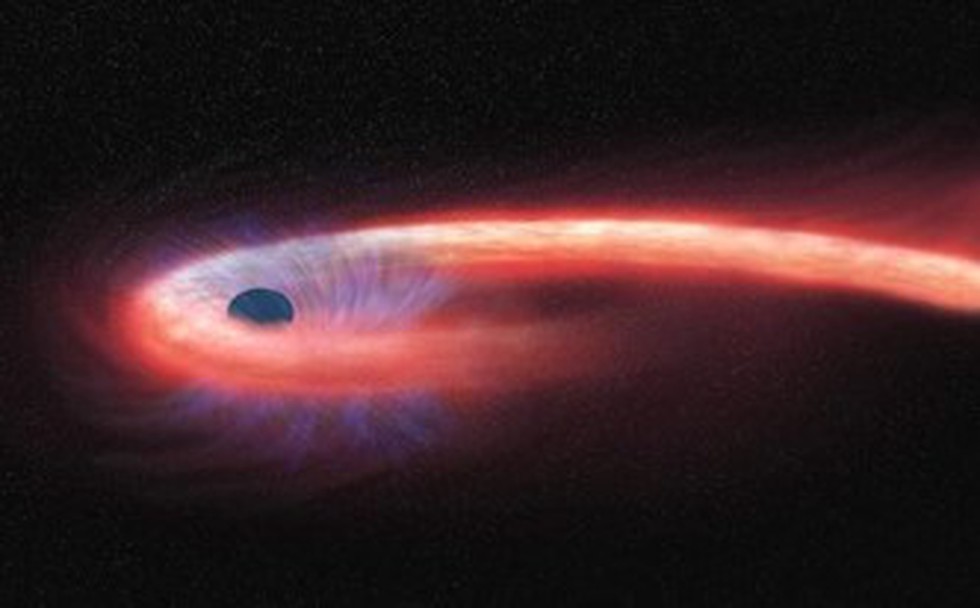About Tidal Disruption Event (TDE):
- TDE is a phenomenon in astronomy that occurs when a star passes too close to a supermassive black hole or a massive stellar-mass black hole.
- The intense gravitational forces from the black hole cause tidal forces that can tear the star apart. This process is also known as "tidal disruption."
- How does a TDE typically unfold?
- Close Approach: A star in a galaxy approaches a black hole on a very close trajectory due to gravitational interactions within the galaxy.
- Tidal Forces: As the star gets closer to the black hole, the gravitational forces acting on it become increasingly uneven due to the difference in gravitational pull on the near side and far side of the star. These tidal forces can be strong enough to disrupt the star.
- Stellar Disruption: When the tidal forces exceed the self-gravitational forces holding the star together, it undergoes a process called "tidal disruption." The star is stretched and eventually torn apart into a stream of gas and debris.
- Accretion Disk Formation: The debris from the disrupted star forms an accretion disk around the black hole. This disk is composed of hot gas and dust, and it spirals inwards towards the black hole.
- Energy Release: As the material in the accretion disk spirals inwards, it releases a tremendous amount of energy in the form of X-rays and ultraviolet radiation.
- Flares and Observations: TDEs are often observed as bright flares of radiation from the centre of a galaxy. These flares can last for several months to years, gradually fading as the disrupted star's material is consumed by the black hole.
What is a Blackhole?
- A black hole is a place in space where gravity pulls so much that even light cannot get out. The gravity is so strong because matter has been squeezed into a tiny space.
- This can happen when a star is dying.
- Because no light can get out, people can't see black holes. They are invisible. Space telescopes with special tools can help find black holes.
- Event Horizon: The event horizon is the boundary around a black hole beyond which nothing can escape, not even light. It marks the point of no return. Anything that crosses this boundary is inevitably drawn into the black hole.
- Supermassive Black Holes: These are found at the centres of most galaxies and have masses ranging from millions to billions of times that of our Sun.
